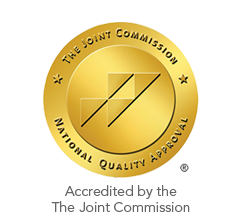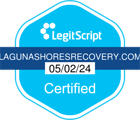You have probably heard health professionals speaking of substance addiction as a brain disease. Why is it viewed this way? Does the brain change with repeated substance use? The answer to this important question has profound implications for how the brain needs to be cared for during recovery. Treatment approaches that seek to improve the mind-body connection are based on the understanding that substance use alters brain functioning.
How Does the Brain Respond to Substance Use?
Before a person makes first contact with alcohol or drugs, the brain uses a natural process of releasing dopamine to cause pleasure or feelings of reward. The use of substances artificially increases dopamine levels in the brain. When the brain learns about this new way of getting intense amounts of pleasure, it stores this information and can motivate the individual to repeat the behavior that causes it. This unique way the brain learns is known as neuroplasticity. Repeated substance use may reinforce the brain’s information that substance use equals easy and extreme pleasure or reward. This creates a dependence on artificial stimuli.
Over time, neuroplasticity creates a compulsive need for that artificial stimulus. By then, the neurological pathways of the brain are fundamentally altered. The brain no longer derives pleasure from natural means because it’s used to the heightened effects of substances. Addiction has become a brain disease known as substance use disorder (SUD). This is a very basic outline of how this brain disease progresses. Genetic, environmental, and social factors add layers of complication and play with risk and preventative factors.
Which Parts of the Brain Are Changed With Substance Addiction?
There is a reason why drugs and alcohol are known as mind-altering substances. They may speed up the central nervous system, affecting heart rate, body temperature, and blood pressure. The human brain has receptors that are susceptible to substances. For example, the hippocampus, which manages short-term memory, may be highly influenced by substances. This explains why many marijuana users tend to lose the memory of recent events.
Other parts of the brain, such as the cerebellum and basal ganglia, are also affected by substance use. Because these regions regulate bodily coordination, substance use may impair motor skills and sensory perception. Among people with SUD, symptoms like loss of clarity in thinking, mood shifts, and distorted time perception are all common results of such changes in the brain.
Can Negative Changes in the Brain Be Reversed?
The answer is yes, thanks to neuroplasticity. Although substance abuse leads to SUD, it is a treatable condition. The same neuroplasticity that caused brain patterns to be reshaped under the influence of substances also causes the brain to heal with detox, time, and appropriate treatment methods.
Many addiction recovery methods are based on understanding the brain’s neuroplasticity. Take cognitive-behavioral therapy (CBT), for example. This is a learning-based therapeutic method that works with the brain’s natural neuroplasticity. When individuals work with a therapist who helps them identify compulsive behaviors and reverse these patterns, they positively reshape their brain.
Meditation and other mind-body connection methods also work in the same fashion. These activities help regulate the brain and body to sync better without the stimulation of drugs or alcohol. Individuals who participate in these practices are reminding the brain to enjoy naturally-generated pleasure by connecting with themselves, walking in nature, or enjoying the company of family and friends.
Because substance addiction creates stress on the brain, recovery means that individuals need to allow the brain to unwind and relax. With better relaxation skills, the brain will gradually relearn how to produce dopamine from healthy activities.
How Long Does an Addicted Brain Take to Return to Normal?
Depending on genetics and environmental factors, it may take months or even years for the brain to reverse the negative influences of substances fully. Many people do not understand that recovery is a long, continuous process. Detoxing substances from the body may be relatively quick. However, prolonged withdrawal symptoms, cravings, and triggers can still exist and sometimes overwhelm people as their brains work hard to get back to normal.
The difficulties lie in the fact that long-term substance use motivates behavioral and mental pattern changes that are harder to treat than physical symptoms. Mind-body connection activities treat people as a whole, not just one aspect or symptom. This connects them to themselves so they can experience healing on a holistic level. Treatment modalities that honor the mind-body connection take time and patience before seeing results. However, they eventually pay off big time, as they help the brain revert to natural reward patterns.
Many holistic treatment methods are rooted in how the mind-body connection works. If you are looking for a treatment facility, check whether they integrate the most recent scientific research into personalized treatment plans. The more you understand how the brain responds and heals, the more motivated you can become in your treatment process.
Substance use can fundamentally affect the brain in many ways. Understanding addiction as a brain disease can help reduce stigma while raising awareness of healing activities that recognize the significance of the mind-body connection. Fortunately, addiction is a treatable brain disease due to neuroplasticity. Laguna Shores Recovery staff applies neuroscience and education to design the right treatment plan for you. We use evidence-based treatment and have adopted an integrated and holistic approach to recovery. Alongside customized treatment plans, family therapy, and support groups, Laguna Shores Recovery also offers aftercare programs that connect you with a supportive community of recovering individuals. This way, you can continue to heal your mind long after completing treatment. Call 954-688-5806.

 Matthew Beck B.A, M.A, LMFT
Matthew Beck B.A, M.A, LMFT 


